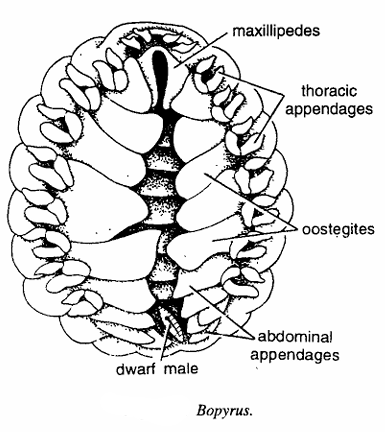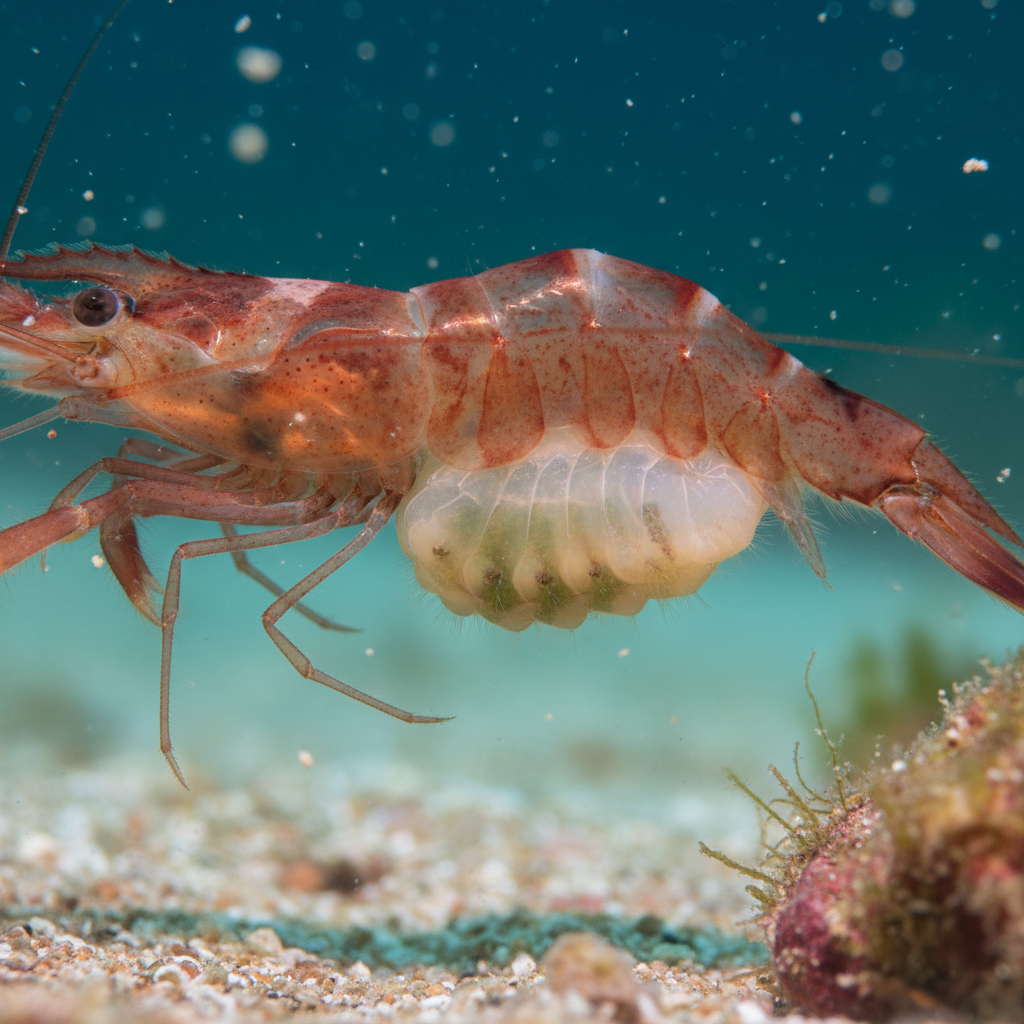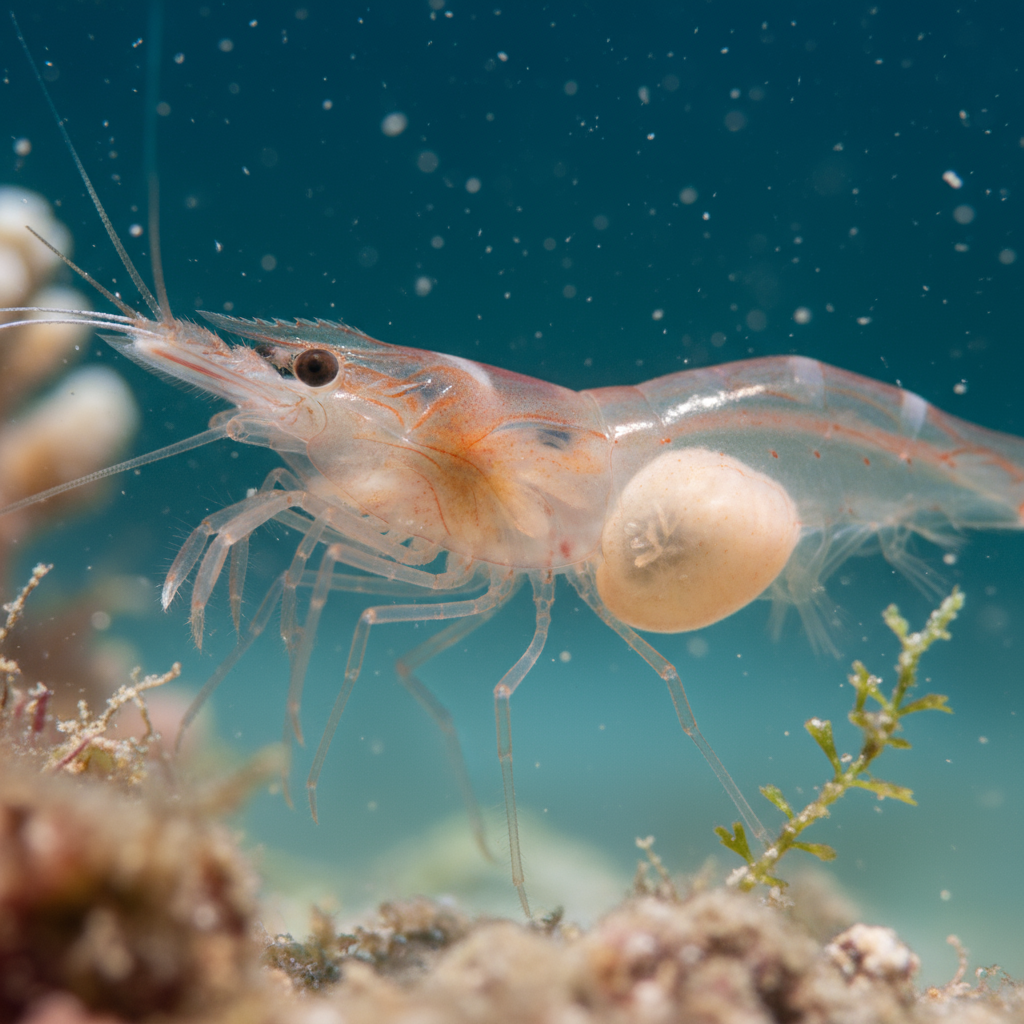Bopyrus: Morphology, Parasitism, and Ecological Impact of Ectoparasitic Isopods
Bopyrus is a genus within the family Bopyridae, consisting of parasitic isopods known for their ectoparasitic lifestyle primarily on decapod crustaceans such as shrimps and crabs. These crustaceans are remarkable for their specialized adaptations to parasitism, living in the branchial chambers or under the carapace of their hosts. Bopyrus species induce noticeable bulges in their hosts’ exoskeleton and are known for reproductive castration and host manipulation. Studying Bopyrus contributes to understanding host-parasite co-evolution, marine parasite biodiversity, and impacts on commercially important crustacean species.
Classification of Bopyrus
| Taxonomic Rank | Name | Characteristics |
|---|---|---|
| Kingdom | Animalia | Multicellular eukaryotic organisms |
| Phylum | Arthropoda | Segmented animals with jointed appendages |
| Subphylum | Crustacea | Marine and freshwater arthropods with exoskeleton |
| Class | Malacostraca | Diverse crustaceans including decapods and isopods |
| Order | Isopoda | Dorsoventrally flattened crustaceans |
| Suborder | Cymothoida | Mostly parasitic isopods on fish and crustaceans |
| Family | Bopyridae | Parasitic isopods living on decapods causing host swelling |
| Genus | Bopyrus | Ectoparasitic isopods found on shrimps, noted for swelling |

Habit and Habitat
Bopyrus species inhabit marine and brackish environments where their decapod hosts reside. They specifically attach themselves inside the gill chambers or beneath the carapace of shrimps and crabs. The female parasite grows significantly larger than the male, inducing a distinctive bulge or swelling in the host’s body. The parasite feeds on host hemolymph, impairing reproduction and overall health. Their larval stages are planktonic before seeking suitable hosts to infect.
Geographical Distribution
Bopyrus species are found in coastal marine regions worldwide, especially in temperate to tropical zones. They are commonly documented along Northeast Atlantic coasts, North Sea, Mediterranean, and reported in various global marine habitats where susceptible crustacean hosts exist.

General Characteristics
- Parasitic isopod exhibiting extra ordinary sexual dimorphism.
- Adult female is greatly deformed bopyrid with an asymmetric body and without distinct segmentation. It has following characters :
- Body is more or less oval.
- It has suctorial mouth parts with simple piercing mandibles.
- Maxillipedes are widely expanded covering the head appendages in front.
- Large lamellar or oostegites develop from the bases of the thoracic limbs and form a brood pouch. Seven pairs of thoracic legs are short and hooked for attachment.
- The abdominal appendages are plate-like functioning as gills.
- Dwarf male is usually found attached to the female beneath the last pair of oostegites.
- It is more isopodian since it normally possesses developed thoracic and abdominal appendages.
- Body Form: Females exhibit an asymmetrical, swollen morphology adapted for parasitism; males are smaller and more conventional isopods.
- Size: Females can range from a few millimeters to over a centimeter; males are considerably smaller.
- Coloration: Usually pale or translucent to blend with host environment.
- Host Interaction: Creates an external bulge as it displaces host tissues inside gill chambers.
- Lifecycle: Includes mobile larvae that attach to juvenile hosts and mature inside.
Special Features
- The life cycle is completed involving two arthropods. First host is copepod and second decapod Crustacea. Actually Bopyrus is a protandric hermaphrodite.
- Its larval stage is actually a functional male but when it assumes the parasitic habit, it loses the male organization and becomes a female.
- Parasitic Castration: Host reproduction is suppressed or eliminated by the parasite.
- Sexual Dimorphism: Extreme size difference with dwarf males attaching to females.
- Host Specificity: Often species-specific parasitism on shrimps like Palaemon serratus.
- Impact on Host: Causes physiological stress, inhibits growth and breeding.
- Lifecycle Dependence: Parasite lifespan shorter than host; detachment occurs at parasite death.

Identification
Bopyrus species can be identified by:
- Presence of characteristic bulges on host exoskeleton.
- Morphology of the female externa attached outside host membranes.
- Size and appearance of the diminutive male parasites.
- Host species and parasite localization within host.
- Molecular methods for species confirmation.
Life Cycle and Reproduction
The females attach inside host branchial chambers while males attach to females for fertilization. Eggs are brooded internally, with larvae entering the plankton. Upon finding suitable hosts, larvae penetrate and mature, disrupting host physiology but ensuring parasite survival. This lifecycle synchronizes with the host’s molting and reproductive cycles.
Ecological Role and Importance
- Population Control: Affects host populations through reduced reproduction.
- Host-Parasite Dynamics: Provides insights into co-evolutionary relationships.
- Fisheries Impact: Can influence shrimp and crab stocks in commercial fisheries.
- Biodiversity: Adds to marine parasitic crustacean diversity.
- Research Importance: Model for studying parasitism mechanisms and host manipulation.
References
- https://en.wikipedia.org/wiki/Bopyridae
- https://en.wikipedia.org/wiki/Bopyrus_squillarum
- http://www.marinespecies.org/aphia.php?p=taxdetails&id=118205
- https://www.sciencedirect.com/science/article/pii/S2213224414000091
- https://pmc.ncbi.nlm.nih.gov/articles/PMC5118301/
- https://isopods.nhm.org/pdfs/26937/26937.pdf
- http://www.marinespecies.org/aphia.php?p=taxdetails&id=157905
